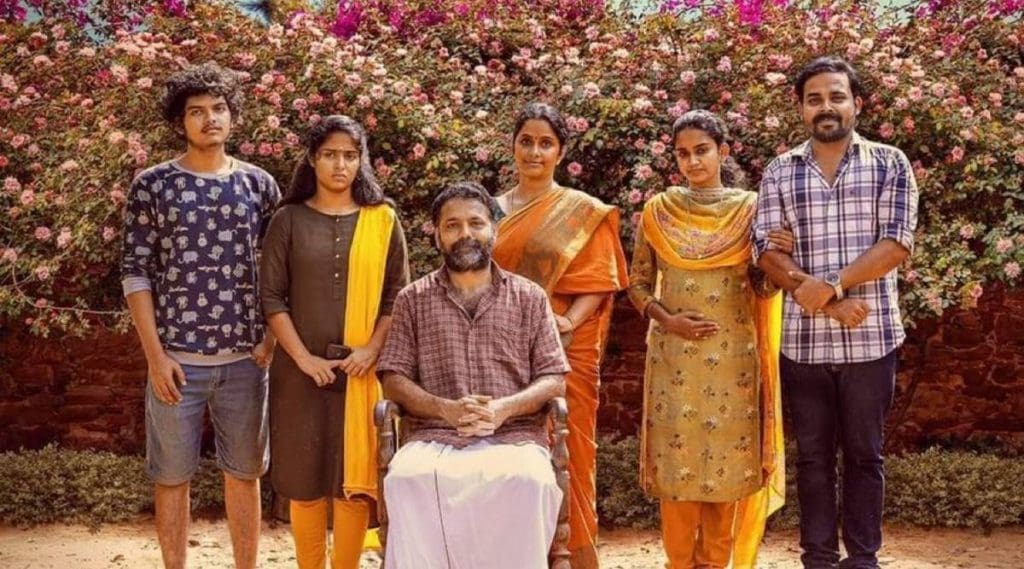
‘Thinkalaazcha Nischayam’ by Senna Hegde was recently released through the SonyLiv digital platform. It has been acclaimed for its energetic performances along with its timely humour. This is not exactly an attempt to review this film since it has been already reviewed by various eminent critics. Rather, this is a primary attempt to locate the ‘social’ in the movie and how it is influenced and informed by the interconnected social, religious, and political logic in a vernacular setting.
Though cultural mediations in the movie are often accompanied by various connotations- linguistic, social, political, and genderwise- it is the gender aspect of it which have invited the attention of almost all the related reviews. Most of the reviews analyses this cinema as the story of a patriarchal father in a regressive household setting trying to assert his masculinity, which was hurt by his elder daughter’s decision to marry against his wish, by marrying off his younger daughter to a gulf-migrant youth. Some of them even criticized the movie for not being intact with the gender question by including its minute interplays in the household. While all of these analyses seem to be raising genuine concerns, This article attempts to fill the gaps in these analyses which tries to mistake the manifestations of certain conditions as the very condition itself.
The movie starts by thanking ‘Kanhangad’ and ‘Thoyammal’ along with the ‘people of attenganam, kodoth and Kasargod’. While it is not that unusual to thank people and places before the movie, it acts as a vital entry point since the people and places appear as the crucial markers in the further narrative of the movie. The opening scene of the movie starts with two men and their setting for a local drinking party, the police intervening it unknowingly and the further continuation of their work only to stop in front of an unexpected sight, and this sight is neither explained nor shown in the movie. The characters are not distinguishable by their appearance since they are shown without the intention of identification. There are distinct chatters and voice variations and even some names, but there are no identifiable faces. The police jeep at this scene is only the visible presence/representation of state throughout the entire narrative. The face-less spaces are marked by their strong vernacular affinities, which is visible in the way in which they give directions to the familiar policemen.
The movie was appreciated in most of the film circles for its realistic portrayal of ‘traditional’, ‘innocent’ rural life. Most of these opinions, reviews and discussions have accepted these categories of ‘rural’, ‘realistic’ and ‘traditional’ and the attributions such as ‘innocent’ as normative without critically interrogating them. The ‘rural’ is always presented in synonymous with ‘innocence’, in contrast to the ‘cruel, inhumane urban’ in numerous movies as much as that it can be even considered as a genre. The ‘rural’ innocence and the urban cruelty is in fact the tensions with modernity and modern values and the approaches of negative/positive attributions are often the results of the anxieties of traditional (landed) class/caste with the expanding/ widening world which often produces spaces for the raise of new subjectivities, desires and aspirations of a class which was denied of all the pleasures of it earlier. Interestingly, this movie also brings in a rural/urban dichotomy, though at the end, where Manisha, the young girlfriend of Sujith, enters into a tense or ‘real’ scene. Her speech and act are presented as a ‘representative’ of the ‘absurd’ urban (values), which is meant to be mocked and laughed at according to the entire schema of narratives unfolded till that scene.
Madhava Prasad remarks that ‘fictional tales can be located in cities and not in villages’. For him, the city is ‘capable of containing fictional narratives’ for it is ‘experienced as a space inhabited by a reified population’ which is abstract in essence. While at the same time in a village, Prasad notes, ‘every individual’s position is clearly marked’ without empty spaces ‘where fictional characters can be placed’. Thus, it becomes impossible to locate individuals individually in the rural space since the interconnectedness binds them all together. Ratheesh, the lover of Suja, is not Ratheesh as such, but the son of Valsala Chechi who runs a tailor shop in the junction. Ratheesh and Suja are not independent individuals yet but connected to larger structures through indebtedness in various forms. This connectedness can be understood as an ‘everyday social’, as Guru and Sarukkai remark, as the ‘life as lived every day, by individuals who function within relationships with other individuals’. This consists of ‘various socialities of housewives, maids, children and countless everyday things and processes around us’. Here, in the movie, the entire narrative structure is expanded through this very interconnectedness and the immediate moments which are informed by this connectedness, whether it’s through formal affiliations such as family and relatives or through informal relationships such as friendships and essential services.
These tensions and slippery engagements with modernity along with the minute reconfigurations of socials and repercussions of it cannot be merely contained into a gender-patriarchy or submission/oppression lens. But rather, it requires larger frameworks in order to expand this gender question along with the interconnected realities- linguistic, cultural and socio-political- into a holistic manner. Thus, ‘Thinkalaazcha Nischayam’ appears as an interesting watch for everyone who is looking for new terrains of storytelling.



